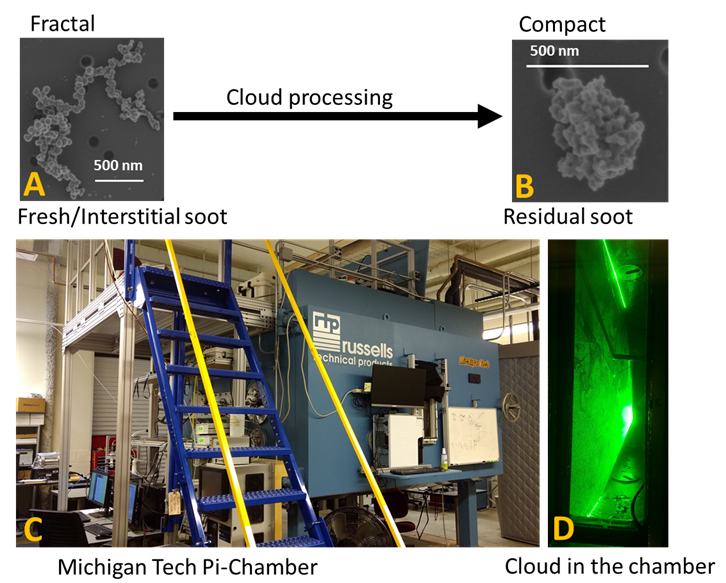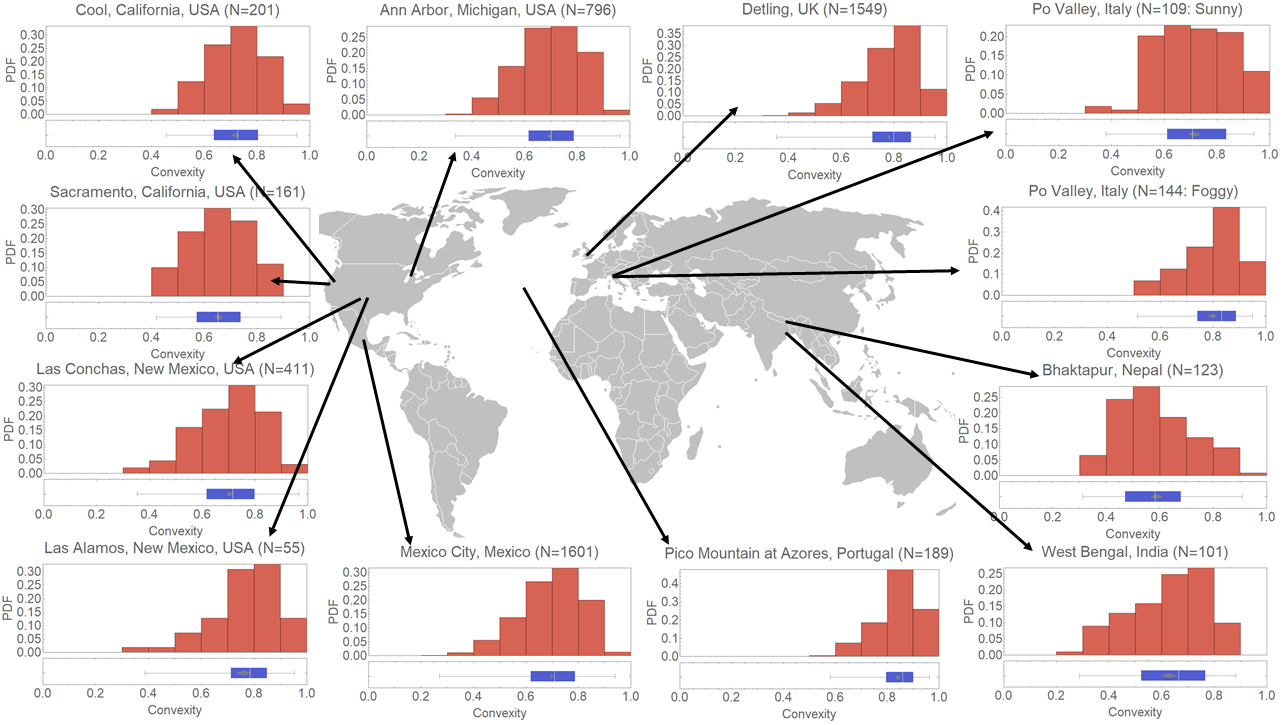Compaction of lacy soot particles by cloud processing
Submitter:
Mazzoleni, Claudio — Michigan Technological University
Bhandari, Janarjan — Michigan Technological University
Area of research:
Aerosol Processes
Journal Reference:
Science
Freshly emitted soot particles – often also referred to as black carbon – have lacy, fractal-like structures. These lacy structures collapse into a compact morphology during atmospheric aging in the atmosphere. From laboratory and field studies, we found that cloud processing is an important pathway toward extensive soot restructuring. The change in morphology affects the physical, chemical, and optical properties of soot and our results can help improve the representation of the soot radiative forcing in climate models.
Impact
Soot particles – a byproduct of incomplete combustion of carbonaceous materials – are ubiquitous in the atmosphere and adversely impact climate, air quality, and human health. Unlike other aerosol, these particles strongly absorb sunlight and warm the atmosphere with an anthropogenic forcing that might be second only to that of carbon dioxide. The morphology of soot affects the properties of these particles including their scattering and absorption cross sections, surface chemistry, ice nucleation efficiency, and aerodynamic properties, thereby determining their settling and deposition. Therefore, the morphology of soot particles also regulates how they penetrate into our lungs when inhaled, how they are removed from the atmosphere, and how they affect climate and the hydrogeological cycle through ice nucleation and aerosol-radiation interactions.
Summary
We studied the morphology of several thousand soot particles collected at different ambient sampling sites as well as in the laboratory. To analyze their morphology and quantify their restructuring, we used single-particle electron microscopy images and measured simple shape descriptors such as convexity and roundness that could be used in future models.
We started our analysis with samples collected in the Po Valley, Italy, where polluted and foggy conditions are common in winter. We found that during foggy periods, soot particles were clearly more compact than during sunny days. To simulate the cloud processing of soot in a controlled laboratory setting, we performed experiments in the Michigan Tech cloud Pi-Chamber[1]. The results showed extensive compaction of soot particles that were observed as the residuals of evaporated cloud droplets, while there was no compaction for soot particles that were in the interstitial air – even though interstitial soot particles were subjected to the chamber’s high-humidity conditions.
To provide a more general perspective, we concluded our study by summarizing the morphological parameters of soot collected at several locations around the Northern Hemisphere including from ARM and ASR field campaigns and sites such as MAX-Mex, ClearfLo, CARES, ENA, Pico Mountain, and LANL fires. The sampling locations included urban, rural, and remote free-tropospheric marine sites. Particles were collected in different meteorological conditions such as dry, humid, and foggy. The soot originated from different sources like vehicle exhaust, wildfires, industries, and biomass burning in brick kilns. We concluded that the time elapsed between the emission and the sampling, as well as the likelihood that the soot particles underwent cloud processing, are determinant factors toward the compaction of soot, with the cloud processing often being the dominant one.
[1] http://phy.sites.mtu.edu/cloudchamber/



